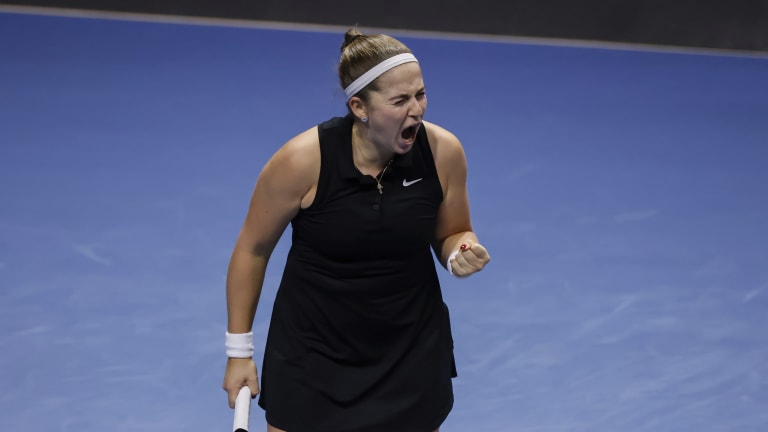WTA St. Petersburg, Russia
Jelena Ostapenko continues upward trend after 64-winner, three-set win in St. Petersburg over Aliaksandra Sasnovich
By Feb 11, 2022WTA St. Petersburg, Russia
Still experiencing COVID-19 effects, Belinda Bencic bows out to Anett Kontaveit in St. Petersburg
By Feb 10, 2022WTA St. Petersburg, Russia
Belinda Bencic, Anett Kontaveit book St. Petersburg quarterfinal clash
By Feb 09, 2022WTA St. Petersburg, Russia
Petra Kvitova, Maria Sakkari surge through St. Petersburg openers
By Feb 08, 2022WTA St. Petersburg, Russia
Ranking Reaction: Karatsev crashes Top 30; Musetti breaks into Top 100
By Mar 22, 2021WTA St. Petersburg, Russia
Weekend winners: Karatsev, Kasatkina, Zverev pick up trophies
By Mar 21, 2021WTA St. Petersburg, Russia
Daria Kasatkina becomes first Russian woman to win St. Petersburg
Mar 21, 2021WTA St. Petersburg, Russia
The Pick: Daria Kasatkina v. Margarita Gasparyan, St. Petersburg Final
By Mar 20, 2021WTA St. Petersburg, Russia
Kasatkina, Gasparyan set up all-Russian final in St. Petersburg
By Mar 20, 2021WTA St. Petersburg, Russia
No. 241 Gasanova survives Pavlyuchenkova in St. Petersburg marathon
By Mar 18, 2021Jelena Ostapenko continues upward trend after 64-winner, three-set win in St. Petersburg over Aliaksandra Sasnovich
The former Roland Garros champion has enjoyed a solid start to the season and is into her fourth WTA semifinal since last June.
Published Feb 11, 2022
Advertising
Advertising
Advertising

Ostapenko is in search of a fifth career title this week in St. Petersburg, having already won on all surfaces.
© Associated Press